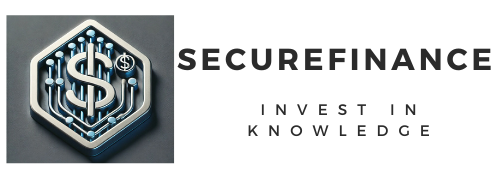
Purchasing a high-end vehicle is a significant financial commitment, often requiring thoughtful planning, strategic saving, and wise investment choices. For enthusiasts, collectors, or anyone aspiring to own a luxury car, the journey to financing such an expensive asset can feel overwhelming. Fortunately, with the right approach to banking and saving, you can successfully achieve your dream car without breaking the bank.
In this guide, we’ll explore the most effective strategies for managing your finances, saving for high-end vehicles, and financing luxury cars. Whether you’re eyeing the latest sports car, a luxury SUV, or a classic collector’s vehicle, this comprehensive roadmap will help you navigate the financial landscape.
Why Banking and Saving Are Crucial When Buying High-End Vehicles
Buying a luxury car is not like purchasing an average vehicle. Luxury cars often come with hefty price tags, which makes saving, budgeting, and financing a critical part of the purchasing process. Whether you plan to pay for your car in full, finance it through a loan, or lease it, understanding how to properly manage your finances is key to achieving your goal without compromising your financial stability.
Not only will banking and saving help you afford the upfront cost, but they’ll also play a significant role in maintaining the car over time, covering insurance, taxes, and even repairs. Effective saving strategies allow you to avoid excessive debt and ensure that the process of owning a luxury car is financially sustainable.
Determining Your Budget for a High-End Vehicle
Before diving into savings or financing options, it’s essential to determine how much you can realistically afford to spend on a high-end vehicle. This involves a deep understanding of your current financial situation and assessing your long-term goals. A few considerations to make include:
-
Your Income: Determine how much disposable income you have after covering living expenses, investments, and emergency savings.
-
Down Payment: High-end cars often require substantial down payments, sometimes 20-30% of the car’s purchase price.
-
Loan Approval Limits: If you plan on financing, the loan amount will depend on your credit score, debt-to-income ratio, and overall financial health.
-
Maintenance and Ownership Costs: Luxury cars are expensive to maintain. Factor in higher insurance premiums, service costs, and unexpected repairs.
Once you’ve established a realistic budget, you’ll have a clearer picture of how much to save, and whether financing or leasing may be the best option.
How to Start Saving for Your High-End Vehicle
Saving for a high-end vehicle isn’t just about putting money into a savings account. You need to plan and make conscious choices to ensure your savings goals align with your budget and timeline.
Set a Realistic Timeline
The first step is determining when you want to purchase the car. A realistic timeline will help you decide how much to save each month. If your goal is to save $50,000 for a down payment on a luxury car within three years, you’ll need to break that down into monthly savings goals.
For example, saving $50,000 in 36 months requires setting aside around $1,389 per month. For a shorter timeline, say 2 years, this would increase to $2,083 per month. By understanding the time required to reach your goal, you’ll have a clear direction for your savings plan.
Automate Your Savings
One of the most efficient ways to save is by automating the process. Setting up automatic transfers from your checking account to a dedicated savings account can help you stay consistent without needing to think about it.
Consider using a high-interest savings account or a money market account to maximize your savings. The interest earned on your balance will contribute to reaching your goal faster, which is especially helpful when saving for large purchases like a luxury vehicle.
Open a Dedicated Savings Account
Opening a separate account specifically for your high-end vehicle fund allows you to track your progress more easily and prevent accidental spending. By compartmentalizing your savings, you create a clearer picture of how much money you have available for your luxury car.
Additionally, if you’re saving for a particular model or year, keeping a dedicated account allows you to manage your funds more effectively. Over time, you’ll become more disciplined in saving, especially when you see the balance growing.
Increase Savings with Side Income
To expedite your savings process, consider earning extra income through side gigs, freelance work, or other forms of passive income. This can help you reach your goal faster, without stretching your budget too thin. Investing in income-generating assets, like stocks, bonds, or real estate, can also supplement your savings.
Financing Your High-End Vehicle
While saving for a luxury car is ideal, many individuals prefer financing options to acquire their vehicle sooner. Here’s a closer look at how financing can help you secure your dream car.
Car Loans vs. Leasing
When it comes to financing, you have two main options: car loans or leases. Understanding the pros and cons of each can help you make a more informed decision.
-
Car Loan: With a car loan, you borrow money to purchase the vehicle and agree to repay it over a specified period, often 36-72 months. Once the loan is paid off, the car is yours. Car loans are ideal for those who want long-term ownership.
-
Car Lease: Leasing allows you to rent the vehicle for a set period (typically 24-48 months) while paying monthly installments. At the end of the lease term, you return the car, unless you choose to buy it. Leasing typically comes with lower monthly payments and allows you to drive a new car every few years.
Getting Approved for a Car Loan
To finance your vehicle, you’ll need to apply for a car loan through a bank, credit union, or online lender. Here are some things to consider when applying:
-
Credit Score: A good credit score (typically 700 or higher) is crucial for securing the best loan terms. If your score is lower, you may face higher interest rates or be denied for a loan.
-
Down Payment: As mentioned earlier, a substantial down payment is often required for high-end vehicles. The larger your down payment, the lower your monthly payments and overall interest paid over time.
-
Interest Rates: Luxury vehicles are considered high-risk by lenders, which may lead to higher interest rates. Shop around and compare rates from different lenders to secure the most favorable terms.
Understanding the Total Cost of Ownership
The cost of financing doesn’t end with the purchase price. When you buy a high-end vehicle, be prepared for additional expenses, including:
-
Insurance: Luxury cars are more expensive to insure due to the higher cost of repairs and replacement parts. Insurance premiums can vary greatly depending on the make and model of the car, as well as your driving history.
-
Depreciation: Luxury cars typically lose their value faster than regular vehicles, which means they may not retain as much resale value. However, certain brands and models may hold their value better over time.
-
Maintenance: High-end vehicles often require specialized care and parts, which can drive up maintenance costs. Be sure to budget for routine servicing and repairs to keep your car in top shape.
Maximizing Your Investment in High-End Vehicles
Purchasing a luxury car is an investment, but how can you maximize its value over time? Proper maintenance, careful ownership, and strategic selling or trading can help you protect your financial investment in a high-end vehicle.
Proper Maintenance
Regular maintenance is key to preserving the value and condition of your luxury car. Always follow the manufacturer’s recommended service intervals, use premium-quality parts, and stay on top of routine tasks such as oil changes, tire rotations, and brake inspections.
Protecting Your Vehicle’s Value
To protect the resale value of your vehicle, avoid high-mileage driving and keep it in pristine condition. Regularly clean the exterior and interior, and store your car in a garage or covered area to shield it from harsh weather conditions.
Reselling or Trading In
When it’s time to part with your luxury vehicle, consider the resale value. Some luxury cars hold their value better than others, and certain models may be more in demand. Explore various options for selling your car, including dealerships, private sales, or trade-ins for a new vehicle.
You Can Also Read : How to Invest in Amazon’s Project Kuiper Before the Next Satellite Launch
Banking and saving for a high-end vehicle requires discipline, foresight, and strategy. By budgeting, automating savings, and carefully evaluating your financing options, you can make your dream car a reality without sacrificing your financial health. Whether you choose to save in full, finance through a loan, or lease a luxury vehicle, the most important thing is to approach the purchase with a clear financial plan in place.
Taking the time to research, save, and manage your finances will not only help you afford a high-end vehicle but also ensure that it remains a worthwhile investment in the long run.
